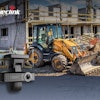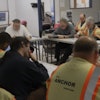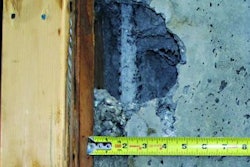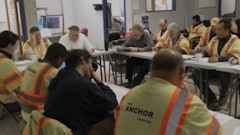Despite increased spending on federal projects and residential construction, private nonresidential construction spending fell 0.1% in November, according to the January 3 report by the U.S. Census Bureau. Compared to the same time in 2009, private nonresidential construction spending is down 16.5%. In contrast, total nonresidential construction, which includes both privately and publicly financed construction, was up 0.3% for the month, but down 6.8% compared to November 2009. Nonresidential construction spending totaled $563.4 billion in November on a seasonally adjusted annual rate.
Six of the sixteen construction subsectors registered decreases last November including communication, down 3.4%; manufacturing, 2.6% lower and lodging construction, down 1.5%. Those subsectors experiencing decreases from the same time last year include lodging, down 48.4%; manufacturing construction, 34.7% lower and office construction, down 18.9%.
Meanwhile, ten of the sixteen construction sectors posted spending increases in November 2010. Conservation and development was up 6.1%; water supply was 3.9% higher and religious construction was up 3.3%. On a year-over-year basis, six construction subsectors posted spending increases including conservation and development, up 35.7%; amusement and recreation, 11.1% higher and sewage disposal, up 8.3%.
Public nonresidential construction represented 54.5% of total nonresidential construction spending in November 2010. Spending for that segment was up another 0.6% in November and is up 3.3% from November 2009. Residential construction spending was up 0.7% for the month, but down 4% from the same time one year ago. Overall, total construction spending – which includes both private and public construction – was up 0.4% from October, but down 6% from November 2009.
“The beat goes on. Publicly financed construction segments continue to dominate the growth story while private-financed ones continue to hemorrhage volume,” said Associated Builders and Contractors Chief Economist Anirban Basu.
“More specifically, total construction spending was led by both the conservation and development segment and the water supply segment, while declines in construction spending were led by communication, manufacturing and lodging. It is for this reason that public nonresidential construction spending now represents nearly 55% of total nonresidential construction spending,” said Basu.
“The expectation is that at some point in 2011, this set of circumstances will begin to shift as the broader economic recovery takes hold and federal stimulus-financed activities wind down toward a close,” Basu said. “The U.S. economy is expected to expand 3% or more this year, which should elevate the fortunes of a number of privately financed construction segments, though certain overbuilt segments such as hotel and office may take considerably longer to begin to recover.”
To view Associated Builders and Contractors' previous spending report, click here.



















